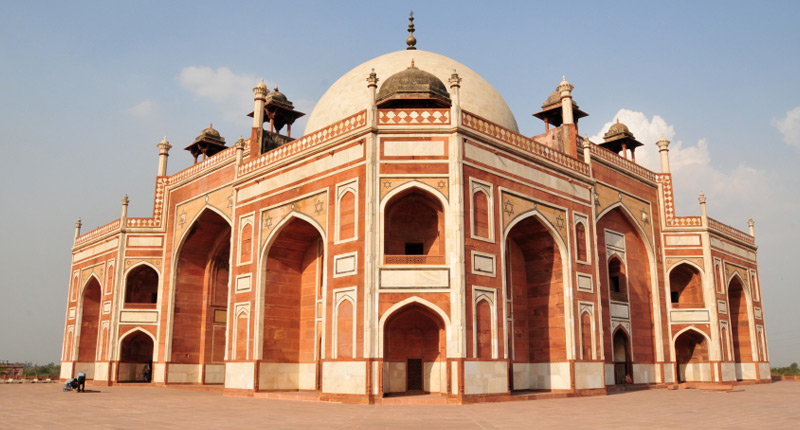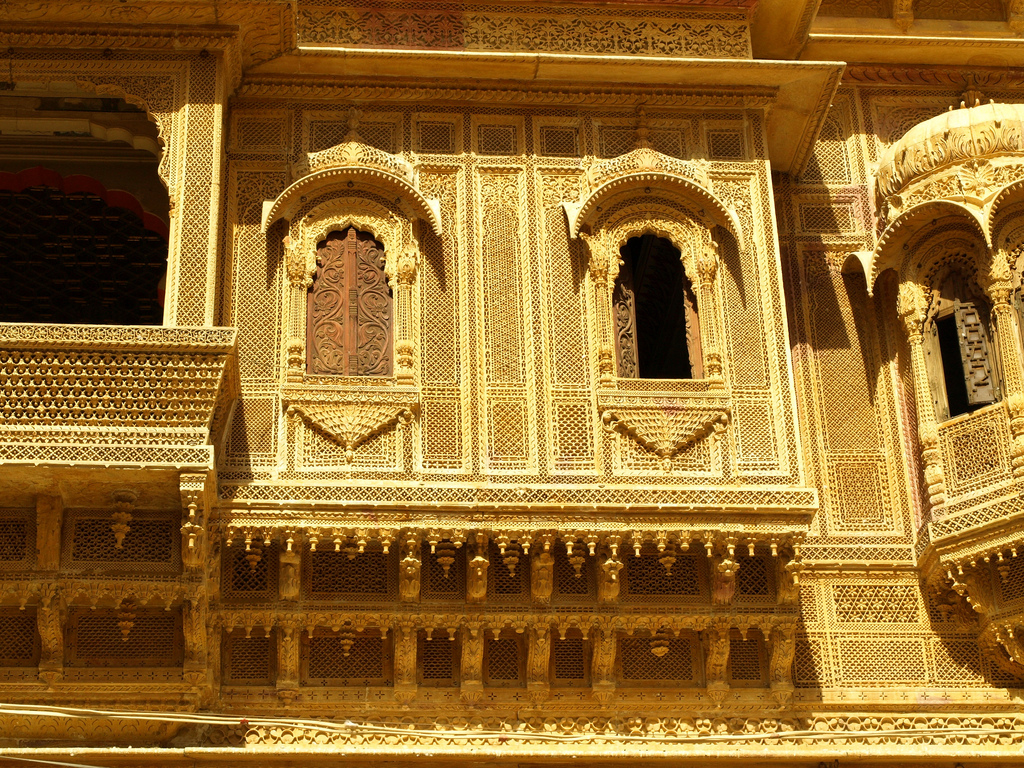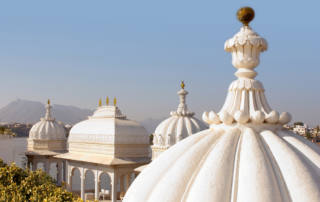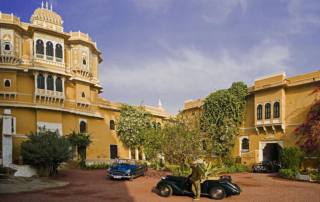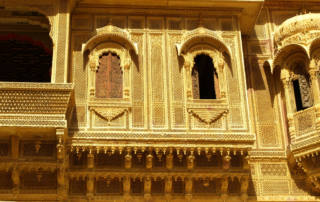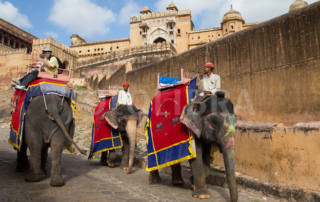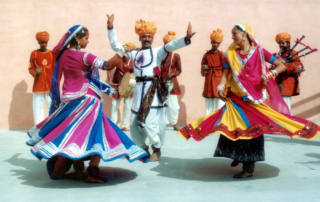15 DAYS/14 NIGHTS
Want to Know More About The Tour?
ABOUT
14 Nights 15 Days visiting: Delhi/Agra / Jaipur Alsisar/ Bikaner /Jaisalmer/Jodhpur/Udaipur
Embark on a colourful journey through remarkable Rajasthan. Explore the legendary Golden Triangle of Delhi, Jaipur, and Agra, before traveling into the mighty Thar Desert to explore the remote towns of Bikaner, Jaisalmer, and the Blue city of Jodphur. Opt to finish your tour back in Delhi or head south to Mumbai (Bombay)
Pre-departure planning is important. Here are certain things you should watch for and plan for.
Visas
Check with the Indian consulate or embassy in your country to find out if you will need a visa to visit the country of your destination, especially for an extended period of time. Some countries have extremely detailed and complicated entry/departure laws and treat visits of a week or two very differently from longer stays.
Money
If you’re traveling to one area, check the cost of living there. If it’s high you’ll probably want to budget more carefully and save some money before leaving. The lower the cost of living the less you’ll have to save, but be sure to have a backup reserve in emergency cases.
General Tips
Talk to other people who have done a similar trip.
If you don’t know anyone personally, try any of the dozens of online travel websites full of first-person travel stories covering every possible type of trip.
Plan big and loose. Read everything you can about the area.
There may be sights and attractions you didn’t know about. A rough outline of your trip might have three or four target points and a variety of ways to get between them.
You don’t want to find out that the weather isn’t what you thought, or the guide book was incorrect, after committing to 6 weeks in a specific spot.
Some trips will allow you more leeway than others. Travel plans in Asia can often be made day-by-day while summer travel in Europe should be organized at least a few weeks ahead unless you’re prepared to hunt around for hotel rooms and train seats.
Set up a pre-trip time-line so you don’t end up with a full todo list during your last week of work or school.
Things to consider are doctor’s visits for a check-up, inoculations, and prescription refills; purchasing plane tickets; renewing passports, and obtaining visas and other documents.
Check your insurance coverage abroad and purchasing additional travel insurance if needed. Don’t forget visiting friends and family members!e
The longer the trip, the lighter you should pack. This might seem strange, but it’s true you can afford to lug a heavy bag around for a week or two, but do you want to have anything extra for a year?
Stick to the absolute basics and know what you can and cannot buy at your destination(s). There’s no point in bringing 6 months of toothpaste to Europe or buying a sarong at home to take to the tropics. If you are visiting several climates, try to arrange it so you visit the warmer places first and the coldest last. That way you can purchase sweaters and long pants and not have to carry them any more than needed. Alternately, visit cold climates first and then ship unneeded layers home or sell them off.
A good rule of thumb is to bring one outfit for the hottest day you’re likely to encounter, one for an average day, and one for the coldest.
Make sure everything goes with everything else (if that’s important to you), and remember that layers are always best.
Be prepared for uncomfortable trips. You will often find yourself in a busy, cramped, economy class environment and it could be for many hours – especially long plane trips.
If you want to arrive at your destination refreshed and able to enjoy the sights, then try a good quality travel pillow to support your head, some earplugs to block out the screaming babies, and an eye cover to block out the sun or cabin lights.
Just avoid those cheap U-shaped pillows from airport shops – your head drops forward and you wake up with a stiff neck.
Make contact with the locals before you go.
Maybe you have a friend-of-a-friend or a foreign exchange student from high school you remember, or just found a friend through a travel website; almost everyone is happy to welcome a foreign visitor to their hometown. This might be as elaborate as a homestay for a few weeks, or just coffee in their hometown or dinner at a local restaurant.
Getting Around
Make your own way or if there are too many great things to see, follow the lead of a guided tour.
A perfect city for exploring on foot with a shop around every corner. Much of the inner city can be walked without trouble, however, in parts walking includes crowds, uneven streets, heavy traffic, and skinny sidewalks. If that’s a problem, there are plenty of taxis to ride in and scooters to rent.
How to Travel
- Subway – The metro is the fastest transportation. Running 5 am to 10 pm every day in all the Major Cities of India.
- Bus & Train – Operated by an independent organization, busses and trains include wifi access for the public. You can take any bus or train marked with the (B Public) sign for free.
- Taxi – Available in all parts of the city. From a restaurant or hotel, you can have them call the city taxi service.
- Car – Rental cars are easy to get and hotels have good parking prices. Once in the main city, you can often walk so we suggest returning the when you arrive.
- Bike – The best way to get around, other than walking, is by bike. If you don’t mind hills, you can bike anywhere. If that’s not for you, stick to the inner city with your bike.
Mini Trips
Just a few miles away you can explore the history and legacy, drink wine and relax. You can wander the hills or be lulled by the fountains. If you have time, the attractions can fill 3 days. We’ve highlighted the best ones here.
Tours
Because of the number of sights to see, some first-time visitors should start with an organized tour. Some things can be covered in-depth, others are just useful for getting your bearings.
The leading tour operators use local historians to lead their tours. Guides offer walking tours, including visits to monuments, museums, and historic locations, as well as eating tours. Tour prices can be high, but most participants consider them a trip highlight. In addition, there are many family related tours, sights, and more appealing activities for children.
Walking tours, like the 3-hour ghost tour, is exclusive in the early evening. A bus excursion ruins special tours as you’ve never seen. Also worth consideration, a group of art historians and architects do a theatrical retelling of dramatic scripts. Go on a tour, and expect guides to break out into a rendition of “Singing in the Rain”, it’s a lot of fun.
- Rickshaw Ride at chandni chowk.
- Elephant Ride at Amber Fort .
- Tonga ride at Jodhpur
- village walk at Alsisar
T ravel Resources
Travel planning is about more than just knowing where you’re going. Prepares to navigate, take control and be ready for anything. This section helps you steer clear of disaster and stay open to enjoy the unexpected.
Quick Tips
- Banks – Open Monday to Friday 9 am to 2 pm. Some banks are closed for lunch.
- Emergencies – For police, dial a local phone number; for an ambulance call a hospital.
- Internet Access – Wifi is standard in most hotels and free in many coffee shops.
- Mail – Buy stamps at the Post Office. Convenient post offices have located all cities. Most are open Monday to Friday 9 am to 3 pm.
- Safety – Pickpocketing can be a common problem. It is suggested for men to keep wallets in their front pockets. Purse snatching also occurs at times.
Visitor Information
This site contains information with a very personal and friendly structure. It also has great links to other related sites online.
Information, internet access, maps, and train passes are available at local Tourist Information terminals. These are located at various sites around the city. Expect a wait if you arrive late in the afternoon or during lunchtime. Local travel agencies are also helpful for quick information and finding hotels. There is no service charge for these services. Hours are Monday to Friday 9 am to 5 pm, and Saturday 10 am to 2 pm.
Transportation
Getting in from the airport and other arrival locations. Travel planning is about more than just knowing where you’re going. Prepares to navigate, take control and be ready for anything. This section helps you steer clear of disaster and stay open to enjoy the unexpected.
- Plane – Flights arrive at the main airport near the city center. If flying from European cities, you might land at a connecting airport. There is a tourist information office at the Terminal international arrivals, open 8 am to 6 pm.
- Train – A train station is on the lower level of the airport. To get into the city, follow the marked signs.
- Taxi – From the airport, there is a flat rate for the 1-hour trip, depending on traffic.
- Train & Bus – Trains and buses arrive at the city center. This is the transportation hub for the city and is surrounded by hotels.
A perfect place for exploring on foot, with local shops around every corner. You will eventually walk somewhere, it’s just going to happen. If you don’t like crowds, uneven cobblestones, heavy traffic, or narrow sidewalks, take a taxi or rent a scooter.
Day 1: Delhi
Upon arrival in Delhi, you’ll be met at the airport and transferred to the hotel. The remainder of the day is yours to relax or independently explore this bustling capital. Overnight – Delhi.
Day 2: Old Delhi Sights
This morning, our Welcome Meeting takes place. Afterward, we embark on a full-day sightseeing tour of Delhi, taking in the impressive Red Fort, Jama Masjid – India’s oldest and largest mosque, Raj Ghat – the site of Gandhi’s cremation and more. Tonight, we enjoy a delicious group Namaste Dinner at a restaurant specializing in classic Indian cuisine. Overnight – Delhi.
Day 3: The Taj Mahal
Delhi – Agra. Departing Delhi, we journey to Agra, once India’s Mughal capital. Here, we visit the impressive Agra Fort, which boasts some of India’s finest Mughal buildings behind its fortified walls. Later on, we take a motorised buggy to the legendary Taj Mahal and witness a magical sunset. Built by Shah Jahan in the 16th century as an enduring memorial to his beloved wife Mumtaz. Built entirely of white marble, the Taj Mahal has no peers. Overnight – Agra.
Jaipur. En route to Jaipur, we visit the ghostly former Mughal city of Fatehpur Sikri. This magnificent fortified city was the capital of the Mughal Empire from 1571 until 1585 when it was abandoned dramatically due to a lack of water to support the peoples who resided in the city. Thanks to the very durable red sandstone, from which it was built, Fatehpur Sikri remains fantastically preserved. Overnight – Jaipur.
Day 5: Jaipur
This morning, we travel beyond Jaipur to the 16th-century Amber Fort. An exotic elephant ride transports us to the lofty fort, where we’ll enjoy a tour of this Rajput extravaganza. Why not bolt on an early morning amazing hot air balloon ride? Later in the afternoon, we tour the City Palace, which boasts an interesting museum of regal attire, and Jantar Mantar, an ancient astronomical observatory, before stopping at a cotton weaving house to see a demonstration of fabric dyeing and block printing. Overnight – Jaipur.
Day 6: Alsisar
Jaipur – Alsisar. Today, we drive to the semi-desert Shekhawati region. The small towns in this region became important trading posts, a lasting legacy of which are the beautiful painted Havelis (mansions) constructed by wealthy merchants in the 18th and 19th centuries. Enjoy an afternoon village walk. Overnight – Alsisar.
Day 7: Bikaner
Alsisar – Bikaner. This morning we make a quick visit to the children and teachers at a local school in Alsisar where we operate our ‘Change for Children’ program, before traveling west to the 14th-century desert town of Bikaner. Once an important staging post on the great caravan routes, much of the atmospheric old town which we will explore is still encircled by massive fortified walls. Within these walls are Havelis, artisan shops and people going about their daily lives. We also visit the spectacular Junagarh Fort & Museum, built between 1587 and 1593 during the rule of Rai Singh. Overnight – Bikaner.
Days 8 – 9: Jaisalmer
Bikaner – Jaisalmer. Driving through the Rajasthani Thar desert we arrive at the medieval caravan outpost of Jaisalmer, one of the jewels in India’s crown. Exquisite wood and sandstone buildings dot the town and within Jaisalmer Fort are homes, hotels, and shops hidden in ancient laneways. During our stay in this stunning Rajasthani fortress town, we’ll enjoy some touring plus a desert camel safari on the rolling sand dunes. Overnight – Jaisalmer.
The blue city Jaisalmer – Jodhpur. An interesting drive through increasingly varied scenery takes us to Jodhpur, a town at the edge of the mighty Thar Desert. Dominated by Mehrangarh Fort which sits majestically atop a hill, Jodhpur is known as the Blue City. This is because of the coloured houses in the old town, painted indigo. We’ll enjoy some touring in this colorful Rajasthani city, taking in the mighty fort and bazaars of the old city which are gathered around the city’s tall clock tower. Overnight – Jodhpur.
Day 11: Ranakpur
Jodhpur – Ranakpur. Leaving Jodhpur, we drive to Ranakpur, a small town tucked away in a remote valley and famed for its beautiful 14th-century Jain temples. We’ll enjoy some exploration here and have time to relax at our hotel. Overnight – Ranakpur.
Days 12 – 13: Udaipur
Ranakpur – Udaipur. Continuing south, we arrive at Udaipur. An oasis of cool, with its massive lake and Venetian-like appearance, Udaipur is one of the most romantic towns in Rajasthan. A favourite amongst travelers, Udaipur is crammed full of palaces and temples. During our stay, we’ll enjoy a cruise on Lake Pichola, plus touring the imposing City Palace, not to mention the free time to explore and perhaps shop for colorful Rajasthani souvenirs and Indian spices. Overnight – Udaipur.
Day 14: Fly back to Delhi
Udaipur – Delhi. Departure transfer to the airport to board a morning flight to Delhi. Option to travel onward to Mumbai, see note below. The afternoon is free for you to relax at the hotel or to head out and further explore Delhi. Overnight – Delhi.
Day 15: Delhi
Saying goodbye to our newfound friends, our tour ends, hotel check-out, and included onward transfer to the airport.
RELATED TOURS:


